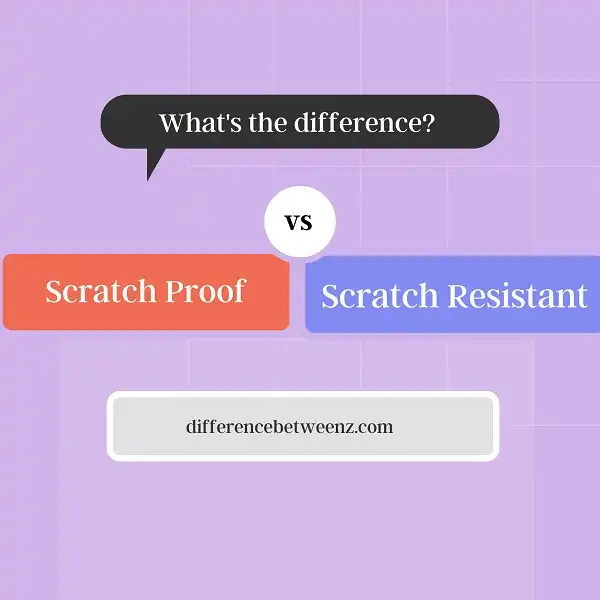When it comes to the protection of your valuable items, you have a few different options. You can choose something that is scratch-proof or something that is scratch resistant. But what’s the difference? And which one should you choose for your needs? Here’s a look at the differences between scratch-proof and scratch-resistant materials, so you can make the best decision for yourself. Both scratch-proof and scratch-resistant materials offer some form of protection against scratches, but they are not created equal. Scratch-proof materials are designed to be completely impervious to scratches, while scratch-resistant materials are only meant to resist scratching and may still show signs of wear over time.
What is Scratch Proof?
Scratch-proof is the ability of a material to resist being scratched. The term is usually used in reference to paint or glass, but can also refer to other materials such as metal or plastic. Scratch-proof paint is often used on vehicles and other exposed surfaces where scratches would be difficult to repair. Scratch-proof glass is sometimes used in high-end electronics and optical devices. In general, scratch-proof materials are more expensive than their non-scratch-resistant counterparts. However, they can provide significant benefits in terms of durability and aesthetics.
What is Scratch Resistant?
Scratch resistance refers to the durability of a material or coating against being scratched. Certain materials, such as hard glass and certain types of polymer plastic, are typically more scratch-resistant than others. Scratch resistance can be important in a number of different applications, from smartphone screens and eyeglass lenses to car windshields and industrial equipment. In order for these materials to retain their scratch resistance over time, they must often be treated with special coatings or other surface treatments. While all materials can eventually be damaged by scratches, those that are more scratch-resistant require significantly more wear and tear before being affected. So if you are looking for a durable and long-lasting material, it is important to consider its scratch resistance as an important factor in your decision.
Difference between Scratch Proof and Scratch Resistant
Scratch Proof and Scratch Resistant are two terms that are often used interchangeably, but there is a distinct difference between the two. Scratch-proof means that the material is completely impervious to scratches, while scratch-resistant means that the material is resistant to scratches but can still be scratched under the right circumstances. In general, scratch-resistant materials are more durable than scratch-proof materials. Scratch-resistant materials are also more common, as it is very difficult to create a material that is completely scratch-proof. When choosing a material for an application where scratches are a concern, it is important to consider both the level of resistance and the type of scratches that the material will be exposed to.
Conclusion
While scratch proof and scratch resistance may sound like they are one and the same, there is a big difference between the two. It’s important to understand this difference when choosing a screen protector for your device or when having scratches repaired on your car. At Fix Scratches, we can help you determine whether your surface needs protection against scratches that will be difficult to remove (scratch proof) or if it just needs a layer of protection to make them less visible (scratch resistant).


